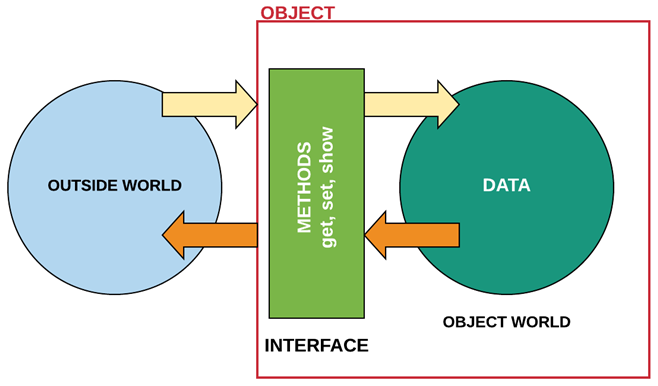
A real-world entity is anything that exists in the physical world and can be identified as a distinct object.
Examples include:
In the context of Object-Oriented Programming (OOP), these real-world entities are modelled as objects, with attributes and methods that represent their properties and behaviors.
In OOP an object is like a real-world entity that has two main characteristics:
Think of an object as a combination of data (attributes) and functions (methods) that work together. Objects are instances of classes, which are like blueprints that define the structure and behavior of the objects.
For example, take a pen:
In Object-Oriented Programming (OOP), entities are represented as objects.
We can think of an object as a combination of data (attributes) and functions (methods) that work together.
A class serves as a blueprint or template for creating objects.
For example, a Shape class might have attributes like line color and
fill colour,and methods like draw() and move().
An object is an instance of a class.

In this tutorial, we will use several classes. these are nomrally shown in a Class Diagram with attributes and methods clearly defined.

Constructor methods are executed when an Object is instantiated and is used to set the initial values for the attributes.
Attributes are only accessed, set and exposed to the "outside world" through the use of modifier methods: getters and setters. These are collectively called the interface
JavaScript has special keyword codes for getter and setter routines as seen here.
In JavaScript, an abstract method is a method that is declared in a base class but is meant to be implemented by derived classes.
Here, we can see the draw() method is partly implemented. However, it makes no sense here becuase we don't know which type of shape it is. Therefore, it must be implemented in the child class where it has a context. i.e. if the child class is a rectangle, we can easily define how to draw a rectangle.


This is a development site to gather together teaching materials for AQA A Level Computer Science. It will be changing and being remodelled throughout this year.
No data is stored on the site but cookies are used to enable the website to function properly.
© 2025 Jay Patel - Dixons Sixth Form Academy, Bradford
Contact: jpatel@dixons6a.com